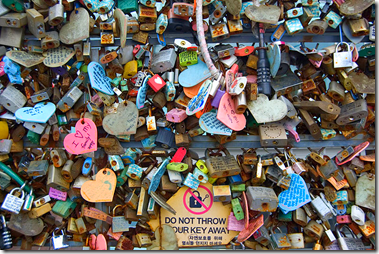We were given a task to pick ten of the most interesting things we found out during our summer research, and give our reasonings for picking each thing.
I therefore went back through all of my research, highlighting what I found to be the most interesting areas.
1. My visit to Paris
It was my visit to Paris in the Summer with my sister that really spurred on my interest in the subject. It allowed me to get a better understanding of certain landmarks, places and the people who lived there. As well as this, I was able to build up a collection of photographs that I would be able to use as part of primary research.
2. Pere-Lachaise Cemetery
When doing my research, this cemetery cropped up in every single book I read, proving to be an extremely popular landmark to tourists. It was this landmark that made me really interested in the famous people of Paris, those alive and dead. It made me want to find out more about how people have been connected to the capital, which led me into looking at those who were born there, many of which were a surprise.
Housing some 300,000 graves, Pere-Lachaise is Paris' largest cemetery and one of the globe's most-visited with two million visitors each year. When delving further, I found that there are a large number of famous graves, including Jim Morrison, Oscar Wilde and Edith Piaf. However, it wasn't just this that fascinated me, it was what the graveyard and the graves themselves looked like. People paid homage in some of the most aesthetically beautiful and weird ways.
Jim Morrison's grave is one of the most fascinating as it's got to the point now where moving it is being considered due the amount of graffiti and littering by fans. At one point, the tomb was also stolen.
There are a large number of stories surrounding the cemetery and the graves in in, and this is something that I would be interested in looking into further. There are a lot of weird and wonderful stories to come from this landmark.
'It's a bit like a miniature town in itself with its grid-like layout, cast-iron signposts and neat cobbled lanes - a veritable city of the dead. Size aside, it's surely also one of the most atmospheric cemeteries - an eerily beautiful haven, with terraced slopes and magnificent old trees that spread their branches over the moss-grown tombs as though shading them from the outside world.
Among the most visited graves is that of Chopin, who has willowy muse mourning his loss and is often attended by groups of Poles laying wreaths and flowers in the red and white colours of the Polish flag. Swarms also flock to the grave of ex-Doors lead singer Jim Morrison, who died in Paris in 1971 at the age of 28. Once graffiti-covered and wreathed in marijuana fumes, it has been cleaned up and is watched over by a security guard to ensure it stays that way, though this hasn't stopped fans placing flowers, candles and cigarette butts on his tomb and scribbling messages in praise of love and drugs on other graves and trees nearby.'
Oscar Wilde's tomb covered in lipstick kisses.
3. Paris is the city of love.
3. Paris is the city of love.
4. Lovelock bridge Paris
I have been fascinated by the lovelocks of Paris ever since a friend experienced it first hand. For her 21st birthday, her boyfriend gave her an envelope and a small box. Inside the box was a padlock with their names and the date they first met inscribed into it, and a small key. Inside the envelope was two tickets to Paris.
During my research, this was something I came across once again. The idea is that you lock your padlock onto one of the bridges, then throw away your key into the Seine River as a symbol of your undying love. However, not so long ago, the locks on the Pont des Arts were cut off by the government. It didn't take long for them to return, displaying the idea that love beats politics.
You have a choice between two bridges in Paris to place your lock - the Pont des Arts and the Pont des l'Archevêché. The first being for your 'committed love' the latter being for your 'lover'. The majority of the locks can be seen on the Pont des l'Archeveche.
It has been said before, that the only way to break or remove the love, is to unlock the padlock. This is, however, impossible as the key is to be thrown to the bottom of the river. Rumour has it that this leads to a lot of brokenhearted individuals who decide to return to the bridge to remove their lock in any way they possibly can.
Personal stories of lovelocks are something that I'm fascinated by, as well as the myths and rumours of the two bridges themselves.
5. The vast history of the royal family.
5. The vast history of the royal family.
6. The Hotel Matignon
The Hotel Matignon is one of the most elegant and most frequented mansions in Paris. It is an interesting one because of the amount of times it's been passed along and sold to new owners - many of which were obliged to sell due to how much it cost. This building has a long and fascinating history. After previously learning of it before starting this project, it is something that I was keen on knowing more about.
It's owners range from members of the Grimaldi family, to a professional dancer and many important agreements were signed here.
The richly decorated interior is by Michel Lange, Jean-Martin Pelletier and Jean Herpin and it was much admired by many.
The vast history of this landmark is what interests me most. Throughout it's time, it's constantly had something going on, and when researching into it, the story seems almost never ending. My keen interest in history is what attracted me to the Hotel Matignon.
7. The Haschischins club
This club was a Parisian group dedicated to the exploration of drug-induced experiences. Several drugs like hashish and opium where increasingly well known in Europe starting in the beginning of nineteenth century. At that time, the use of these drugs is particularly widespread in the scientific and literature circles for purposes of recreation, it was more of an aesthetic curiosity or pseudo-science rather than a smoking lounge.
The Haschischins club met every month on the ground floor of the Hotel Lauzun. As the name suggests, hashish was handed round - apparently in the form of a green jelly - at the clubs, attended by Manet, Balzac, Nerval and Baudelaire, among others. Baudelaire lived in the building for a while in a small apartment on the second floor, where he wrote much of Les Fleurs du mal and ran up large debts buying antiques.
The club was active from about 1844 to 1849 and counted the literary and intellectual elite of Paris among its members.
This caught my eye because of my interest in Charles Baudelaire and his poetry. The link between places, events and people is a fascinating one and creates interest because it's not just the history of an individual.
8. This subject matter was also chosen because I felt that it would fit in with the way that I wanted to present my final project. I wanted to explore illustration further, and during the Summer I had been sketching out buildings and houses. It was the buildings of Paris that really captured my eye.
9. Paris has a great history, and I felt that I would be able to create some great links within the subject matter. When first thinking of places, people and events, its the one thing that first came to my mind. After brainstorming some ideas, I found that I really wanted to delve further into it's history - of it's people and it's landmarks.
10. It's architecture.










No comments:
Post a Comment